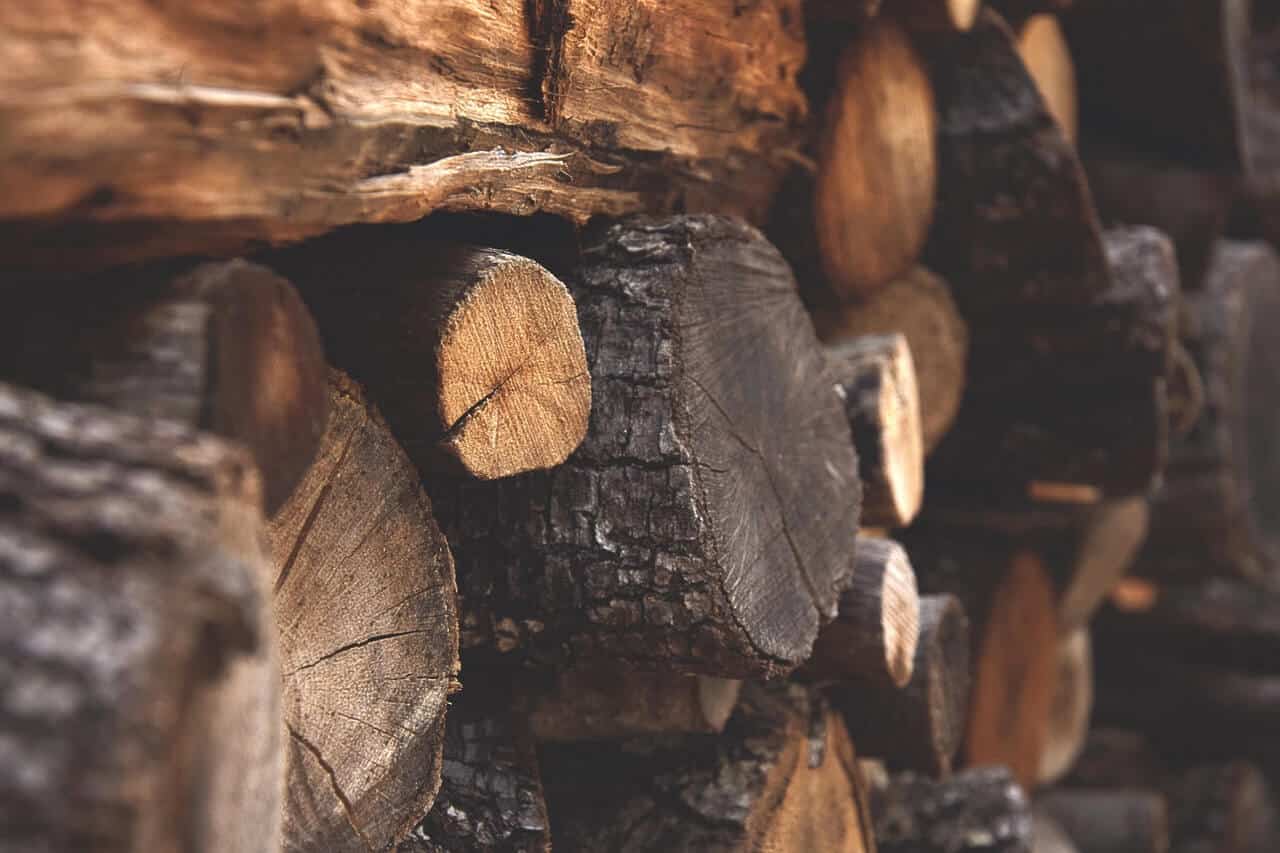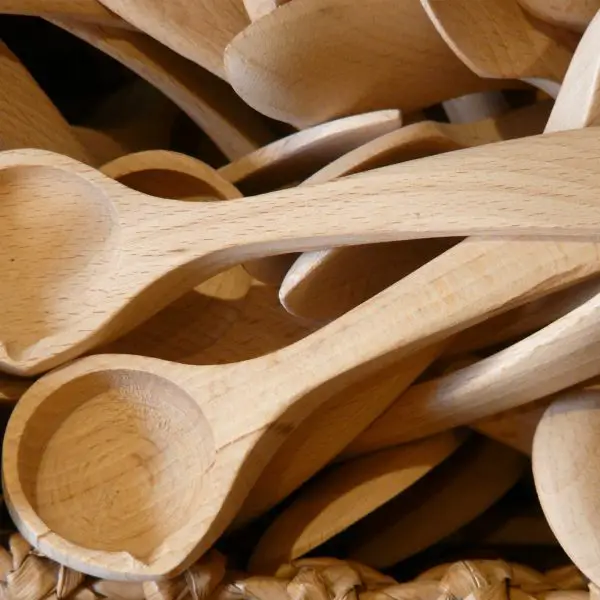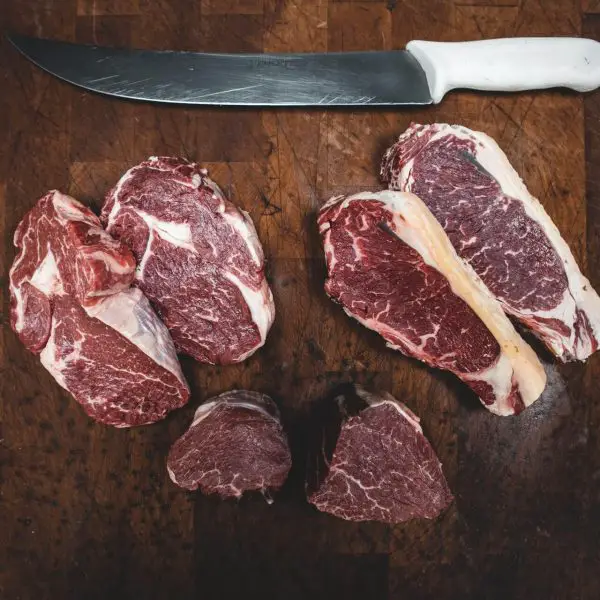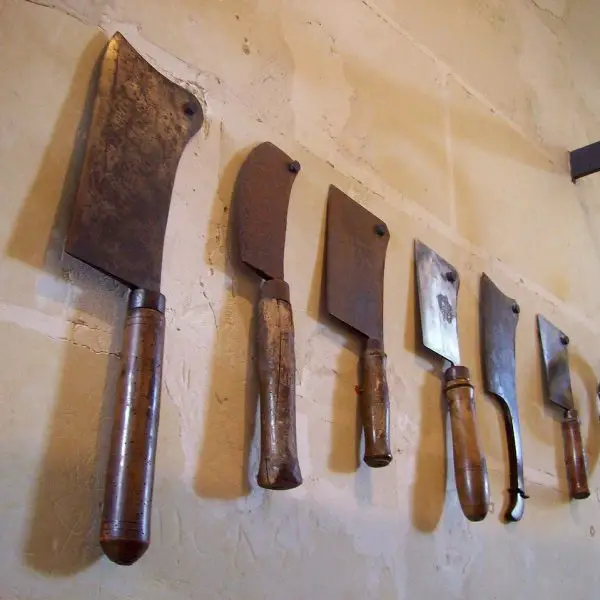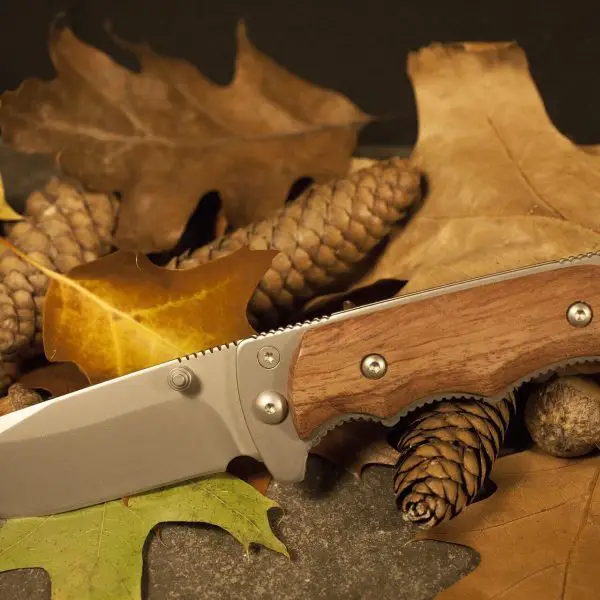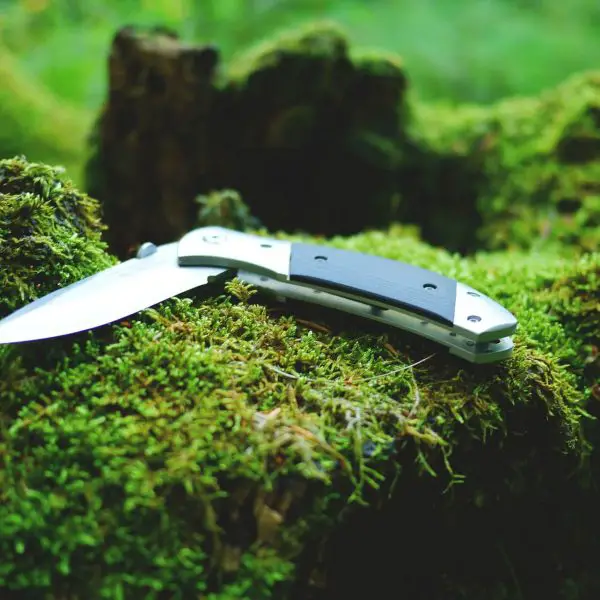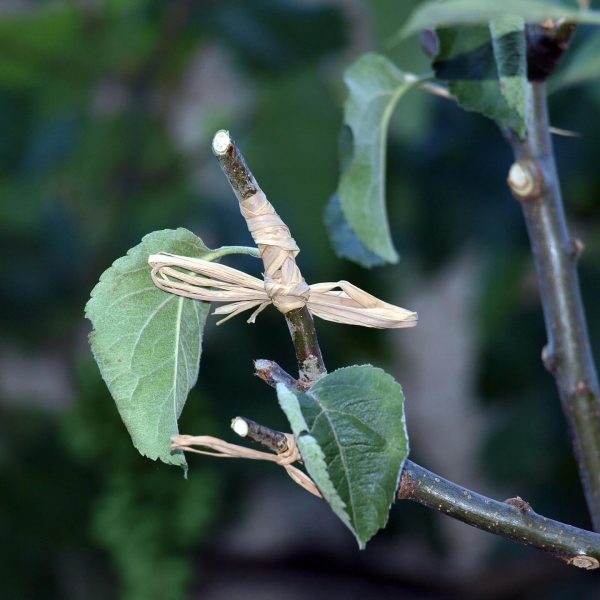Knives are one of the most ancient tools we still continue to use today. So, participating in such a time-honored tradition will connect you to your ancestors while learning a very valuable skill.
But, to make a great knife, you have to have the right material for the handle.
While there are many materials available for making them, wood tends to be king.
There are many benefits to using wood as a medium, but you have to know what kind of wood is best. So, here’s a quick guide to help you determine the best wood for knife handles.
Why is wood a good choice for knife handles?
Ever since knives came into existence, people relied on wood (and bone) to fashion handles.
Wood is durable, attractive, and easily worked. It’s relatively inexpensive and adds a classic aesthetic quality. They’re comfortable, durable, and provide a variety of creative possibilities.
The Downsides
But, if you need a knife to be water-resistant, wood will not hold up after prolonged and frequent use.
There are some woods that can withstand a little water, but daily use of the knife will cause it to fall apart. This will be true no matter how high-quality the timber is and regardless of the varnish or veneer added.
Also, wood is very porous and unstable. This means there’s going to be some maintenance, care, and upkeep required. The environment, weather, temperature, and other similar factors will affect the wood over the course of time.
Best Types of Wood For Knife Handles
Birch
In Northern Europe, Birch is a common wood used for knife handles. It provides an exquisite appearance while offering a comfortable grip.
- HANDCRAFTED QUALITY: Helle Outdoor Knives are handcrafted, high quality knives made in Norway since 1932. Our knives are built to last, and our philosophy is based on the principles of honesty, hard work and quality.
Last update on 2024-07-26 / Affiliate links / Images from Amazon Product Advertising API
What makes this wood convenient for a knife handle is the fact that you don’t have to use glue, it’s water-resistant and doesn’t decay very fast. It can last for many decades with very little maintenance.
Black Walnut
Black Walnut is a stunning wood hailing from North America. It’s a heavy, robust wood that’s flexible enough for carving.
No products found.
Black Walnut is ideal for ornamental and unique knife handles. It’s not for prolonged use, however. It’s mostly for a showy-type of knife handle piece.
Bloodwood Satin
Bloodwood Satin, known as Cardinal Wood, is an exotic timber from Central America and the Caribbean. As a wood for knife handle it’s very comfortable, beautiful, and comes in an intense deep crimson red.
It’s durable and dense with linear fine grain. As it ages on the handle, the hue darkens which brings out its natural beauty.
Cherry
Cherry wood is a very preferred type of timber for creating knife handles. The fine grain and lovely texture provide a solid grip with an elegant look.
- 19 Pc. Kitchen Knife Set Includes
Last update on 2024-07-26 / Affiliate links / Images from Amazon Product Advertising API
The wood darkens with age, giving the red-brown an even more pronounced beauty. It’s fairly hard and stable with the capacity to last for decades, making it one of the best wood for knife scales.
Desert Ironwood
Native to southern Arizona and the northern Sonoran desert of Mexico, Desert Ironwood is a beautiful dark brown color that darkens to near black as it ages. It has a very fine grain which makes it a perfect wood for rigid knife handles.
Ebony
For durable, sturdy, and gorgeous wood, Ebony is a classic timber material for knife handles. It’s extremely dark brown, almost black with gray streaks.
- ✅Sharp Folding Pocket Knife: Durable D2 foldable knife blade with hardness 59-61 RC, provides razor sharp cutting performance, stylish locking liner
Last update on 2024-07-26 / Affiliate links / Images from Amazon Product Advertising API
Knife handle makers praise this wood for its beauty, great grip, and strength. In fact, many people tout Ebony to be the best wood for knife handles. But, it’s also the most expensive.
Hickory
The wood of the Hickory tree is a good choice for knife handles. It’s strong, flexible, tough, and shock-resistant. It can carve into almost any shape for a tight, firm grip.
- NORSE SEAX BLADE: The hilt of the seax knife features dragon-inspired etchings, adding a touch of Norse mythology to the design. Its full tang construction ensures durability, strength and minimizes breakage risk.
Last update on 2024-07-26 / Affiliate links / Images from Amazon Product Advertising API
Hickory has a white, light creamy color with brown streaks. This looks quite handsome when attached to a steel blade.
Oak
Hands down, Oak is the primo knife handle material. It’s fairly inexpensive, readily available, and carves easily. Oak has a fine grain and is so strong it can withstand prolonged use.
This is one of the longest-lasting types of wood for knife handles, where it may not decay for thousands of years. They’re a light beige to brown in color, depending on the species of Oaktree.
Olive
The light yellow to brown color with brownish-black streaks displayed by Olive wood is breathtaking as a knife scale. Throughout its life, the color gets darker and provides a richer appearance.
- Explorers, hunters, fishermen and military live exciting experiences with our knives every day around the world. JEO-TEC Nº17 folding knives have been specially designed to be used in rough conditions and hard outdoor environments.
Last update on 2024-07-26 / Affiliate links / Images from Amazon Product Advertising API
It’s moderately durable but can last for a decade or two as long as it gets proper care and storage. It will require an application of oil on occasion.
Rosewood
Darker than Oak and similar to Ebony, Rosewood is a common option for knife handles. It’s abundant all over the world, but Indian Rosewood is the most sought-after.
Rosewood is gorgeous, affordable, durable, and tough. It’s more ideal for kitchen and outdoor hunting knives because of how long they last.
How to Make Wood Knife Handles or Scales
The best way to teach yourself how to make a knife handle is by getting a top-notch tome to help guide you through the process. Of course, it’s always a good idea to take a woodshop class but having a book will be invaluable to your creative process.
Our Recommendation

Bo Bergman’s “Knifemaking: A Complete Guide to Crafting Knives, Handles, and Sheaths” is an easy-to-read book that makes it simple enough for beginners to understand while not short-changing experienced bladesmiths.
Although this focuses on the Scandinavian style of handle making, it’s very comprehensive. The book includes 10 different knife-making projects and lays everything out in detail, step by step.
Bergman itemizes blades and materials you’ll need to get started. But, if you really want to forge your own blade, this book doesn’t really delve deeply into it.
Safety Tips for Handle-Making
When creating a wood knife handle, there are some safety tips to keep in mind:
- Eye and hand protection are must-haves.
- Wear a mask to reduce the amount of sawdust that enters into your respiratory system.
- Make sure you have all the appropriate tools or have access to the right implements (ie band saw, drill and etc).
- Cover the edge of the blade with duct tape to ensure you protect yourself while working.
- Before you begin working, come up with a solid plan of action for how you plan to approach this. Will you use epoxy or just pins? Will you use an entire piece of wood or will you scale it together?
- Always use finishes and veneers in a well-ventilated area.
Conclusion
Creating your own knife handles out of wood can be a beautiful and relaxing hobby or something you do as a professional. Either way, you have to pick the right kind of wood for the type of knife you’re making.
Thoroughly educating yourself and designing a solid plan of action before you begin will be your keys to success.
Also, you want to make sure you are confident in your abilities by taking a few woodshop or knifemaking classes. This will be particularly important if you’re brand new to the idea.
But, as long as you have the right equipment and follow a few safety tips, you’ll be making your own wooden knife handle in no time.

